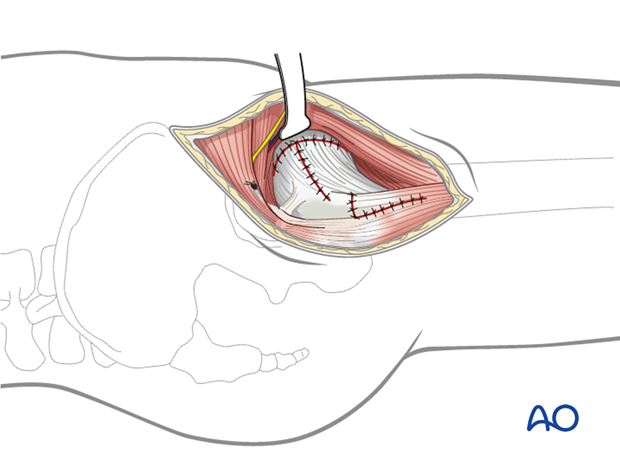Anterolateral approach (Watson-Jones) to the proximal femur
1. General considerations
The anterolateral approach (Watson-Jones) to the proximal femur, through the interval between the gluteus medius and tensor fasciae latae, provides somewhat limited access to the hip joint along with the lateral proximal femur. With well-positioned retractors and adequate soft-tissue releases, it is possible to perform open reduction of displaced femoral neck fractures and some femoral head fractures.
AO teaching video
Approach to Proximal Femur and Elbow
Joseph Schatzker demonstartes approaches to the proximal femur (cadaveric dissection; 7 minutes)
2. Skin incision
Start the slightly anteriorly curved skin incision about 7–10 cm proximal of the lateral part of the greater trochanter (directed towards the tubercle of the iliac crest – the posterior landmark of tensor fasciae latae origin). Distally, extend the incision along the femur about 10 cm below the greater trochanter.
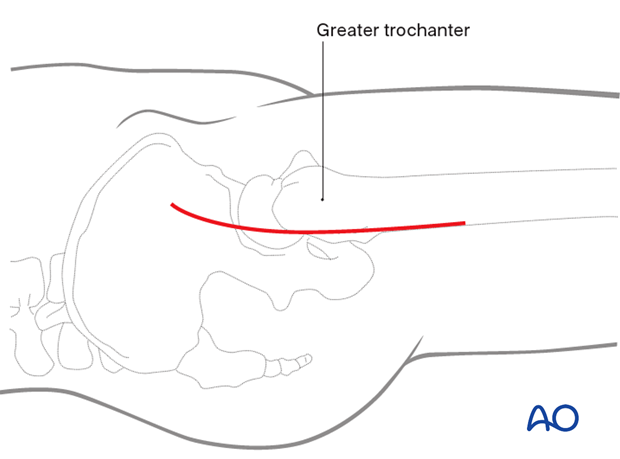
3. Incision of fascia lata
Expose the fascia lata sharply. Incise the fascia lata over the femur and extend this incision proximally along the posterior border of the tensor fasciae latae.
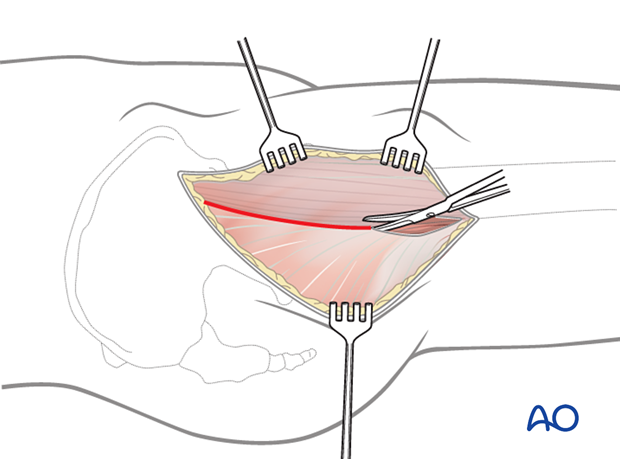
4. Deep surgical dissection
With the greater trochanter and the gluteus medius exposed, retract the tensor fasciae latae anteriorly and the gluteus medius posteriorly. Expose the interval between the gluteus medius and the tensor fasciae latae and extend it proximally over the hip joint. This can be best done by blunt dissection. The proximal extension is limited by the superior gluteal nerve and vessels.
Be aware of vessels running across this interval. They require ligation or cautery.

Exposure of hip capsule
Place a Hohmann retractor between the gluteus medius and the upper part of the femoral neck proximal to the hip capsule. Additional retractors inferior to the neck and towards the acetabular rim will expose the anterior part of the capsule.
External rotation of the leg improves access to the hip capsule.
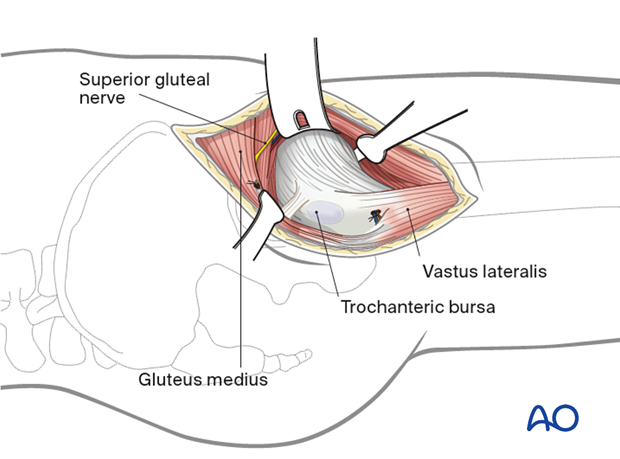
Anterior release of vastus lateralis
The origin of the vastus lateralis should be released from the anterior inferior trochanteric region to expose the underlying hip capsule. Retract the muscle inferiorly.
Adjust the retractors as necessary and debride periarticular fat to expose the hip capsule.

5. Opening of the joint capsule
Make a T-shaped incision in the capsule …
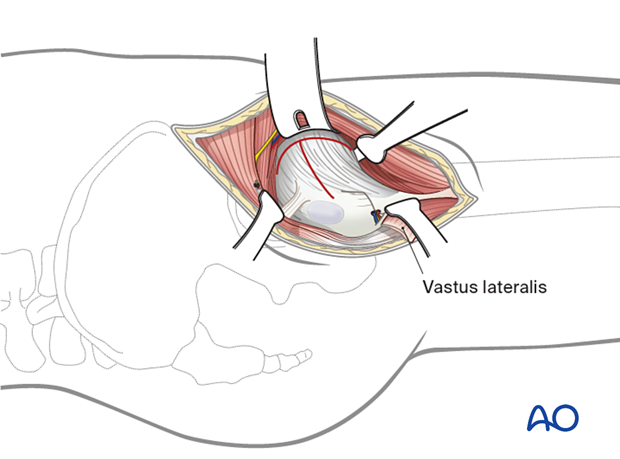
… and place two retraction sutures, superiorly and inferiorly. Protect the acetabular labrum.
This capsulotomy shows the anterior femoral head and neck. Lateral traction and repositioning of the leg can improve visualization.
The incision can be extended distally over the proximal vastus lateralis to allow insertion of screws or DHS for femoral neck fracture fixation.
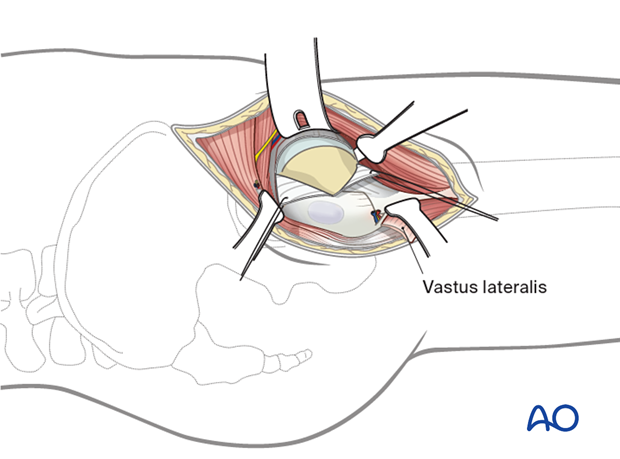
Option: Inverted-T capsulotomy
An inverted-T capsulotomy can be chosen to improve exposure to the base of the neck.
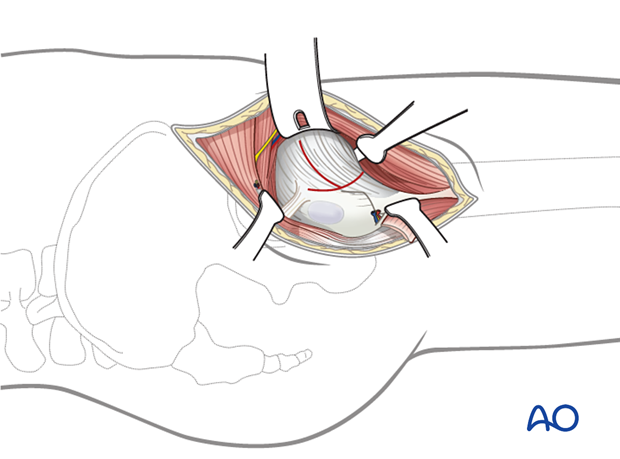
6. Wound closure
Perform a meticulous debridement of all soft tissues before starting wound closure.
Remove necrotic tissue and irrigate the entire wound to decrease the risk of periarticular ossification. Insert suction drains if desired.
Close the capsule, the vastus lateralis, and the fascia lata incision with interrupted sutures. Close the subcutaneous tissue and skin as desired.
